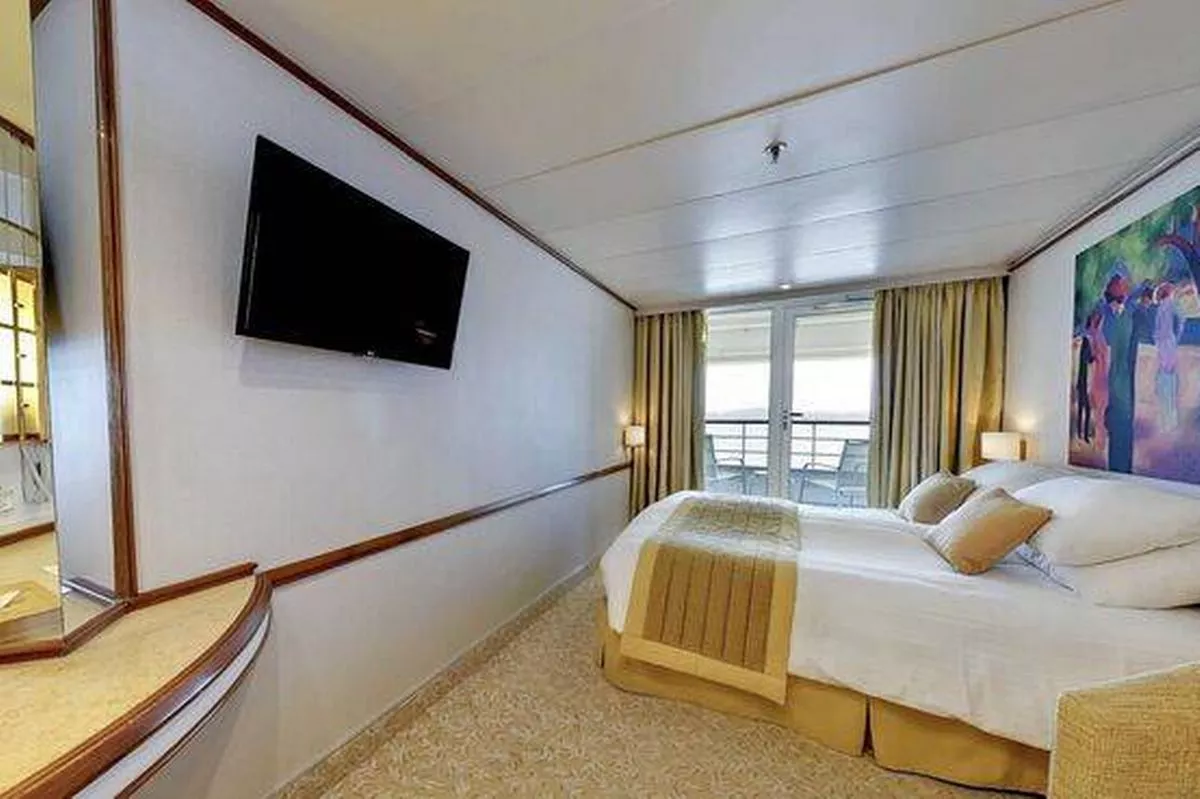Meredith Shay, a former flight attendant from Florida, sold her flat so she could go on a three-year cruise that was cancelled at the last minute. But she has not been deterred
What would you do if you’d sold your home to buy a holiday that was cancelled at the last minute?
For most of us, the answer probably wouldn’t be to book a near-identical but slightly longer holiday just two years later. Meredith Shay, however, has done just that. “I’ve just signed on for five years,” the Floridian retiree told the Mirror.
Back in 2023, Meredith was preparing to embark on the Life at Sea cruise, widely touted as the longest sailing in commercial cruise history, when she received terrible news. The company told passengers that it had no working ship, so the upcoming sailing was cancelled. That meant no sailing for hundreds of customers who poured their life savings into the venture and had prepared to leave their lives on land behind.
“I did sell my house. I put everything into storage, moved out of my apartment. I was about to sell my car. But I am not a ‘woe is me’ person. There is a song over here, ‘dust yourself off and try again’. That is what I’ve done,” she explained. “I had a 12-hour pity party, then said, ‘okay, you’re free. Do something’. No encumbrances at all.”
READ MORE: World’s coldest city drops to -45C as local warns ‘you can freeze in minutes’READ MORE: ‘My child was left crying after Hyde Park Winter Wonderland Santa refused to see her’
The former flight attendant has been renting in Florida since then. Come next June, her flat will become “the world’s most expensive storage container”, and Meredith will fly to Manila to start sailing the world. For five years straight.
She will do so on the Villa Vie Odyssey, which is run by some of the same people behind Life at Sea and has been sailing since earlier this year. Signing up is a leap of faith for Meredith for multiple reasons.
She counts herself lucky to have received a full refund of close to $500,000 following the first cruise. Others didn’t pay on credit cards and haven’t been able to recover all their money. The Villa Vie Odyssey cruise ship has also had problems. It was due to depart from Northern Ireland last May, but issues with its rudder stocks meant its guests were marooned in the city for more than four months. It was there for so long that shipmates Angela Harsanyi and Gian Perroni had time to meet, fall in love and then marry on the banks of Belfast’s River Lagan.
This time around, Meredith’s room, a fancy eighth-floor suite for five years, cost her $159,000, with $7,999 a month homeowner fees bringing the total to around $630,000 (£469,000). When she first booked, the total was $520,000 for three years, all in.
Meredith admits that booking again hasn’t been worry-free.
“Sure, I’m worried, but why not? I can’t live my life in fear. Nobody likes to lose money, but they’ve been out now for a good period of time; they’ve overcome earthquakes, typhoons, and the captains really know what they’re doing. I already have friends on Villa Vie.”
When asked if she intends to spend the rest of her life at sea, Meredith explained: “My life is full of regrets, and I don’t want this to be one of them. I will be five years older, and I’m very healthy now. But one never knows.”
The Mirror contacted Villa Vie, whose founder Mikael Petterson explained what happened to the Life at Sea cruise. He said: “Yes, some of the Villa Vie team were initially involved with Life at Sea. Some of us, including myself, helped build the brand and sales team, but realised after just two months of working with Miray (the parent company of Life at Sea) in Turkey, it would be impossible.
“The ship we saw in April was just not what they had portrayed to us. We had to make the difficult decision to leave the project in May of 2023, where we refunded all customers and announced the project was over. Miray, in turn, decided to take over, double down on the promises, but as we predicted, was not able to deliver the ship as promised in November 2024.”
He added: “We do feel terrible for the customers who lost their money in the pursuit of the dream life we are now able to deliver through Villa Vie Residences.”
Miray has been contacted for comment.
Do you have a travel story to share? Email webtravel@reachplc.com
















